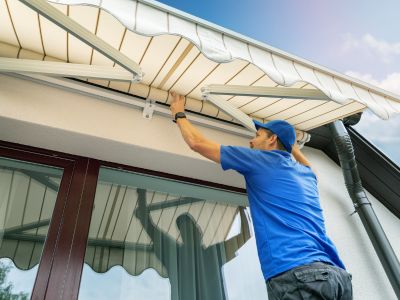Note: You may filter by category below. To use search feature for all categories return to main blog page here.

Shading to Save Energy: Reduce Heat Loss and Heat Gain
This article has been updated from its original form and contains affiliate links. As an Amazon Associate I earn from qualifying purchases.
The summer solstice is quickly approaching! Have you considered ways to reduce your energy bills by using shading strategies? Blocking direct solar heat gain can make a big difference in avoiding hot spots in the home and reducing the load on air conditioning systems to save energy. When I've run energy use simulations for buildings we look at shading impacts. Permanent shade structures and window shades can be optimized for energy savings.
Solar roller shades are great for cutting down on heat gain while providing a partial view of the outdoors. Cellular shades offer a bit more insulating value, with light-filtering or room-darkening options. We enjoy using a combination of shades on our windows to give flexibility depending on the time of year, and time of day.
We loved having two retractable awnings similar to this style at our last home. The awnings were very effective at maintaining a cooler temperature indoors. If we were expecting high winds we would keep them closed during storms to prevent damage. Be mindful of when to open awnings and when to raise and lower shades to minimize direct sunlight shining into the home. Sun angle needs to be considered when determining the placement of awnings.

You can also install a more permanent structure, such as an overhanging roof or even a pergola. Be cautious of installing vines or climbing plants too close to the home. Another option is to install a shade cloth seasonally over the top of the pergola. You can also hang exterior roller shades or curtains from the roof or pergola structure to help block late afternoon sun when the sun angle is low.
For long term planning and property resiliency you can also consider landscape design strategies to reduce energy consumption. For northern cold climates, a deciduous tree can be installed to shade the sun exposed areas of a home or building to provide summer shade, while allowing beneficial solar heat gain in the winter months. A resource like Sue Reed's Energy-Wise Landscapes may be of interest in planning your landscape design.
Are you applying any of these strategies to save energy during the summer?
To receive future blog posts click the button above to opt-in. I also invite you to follow me on my Facebook™ business page, and in the Sustainability & Wellness Seekers Facebook™ Group, linked here. You are welcome to join the community conversations!
Copyright 2023 Beth Manteuffel All rights reserved


